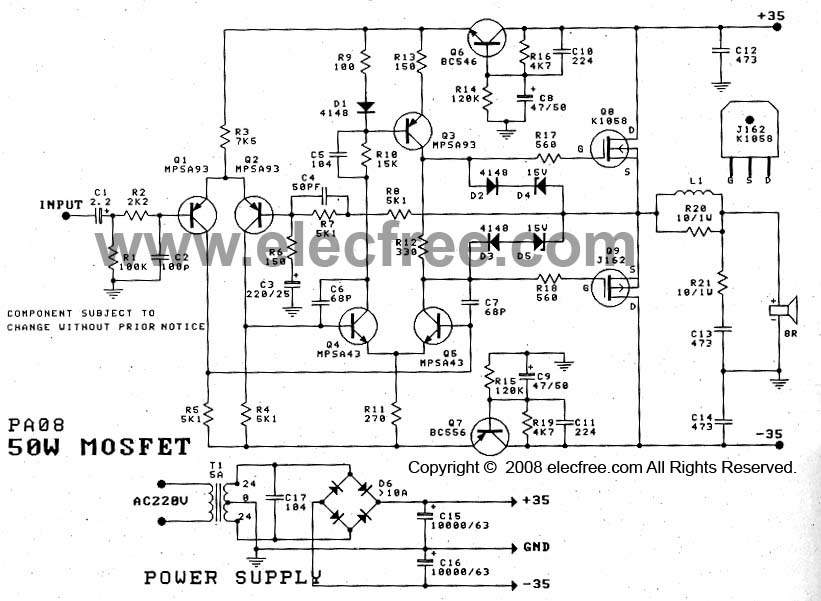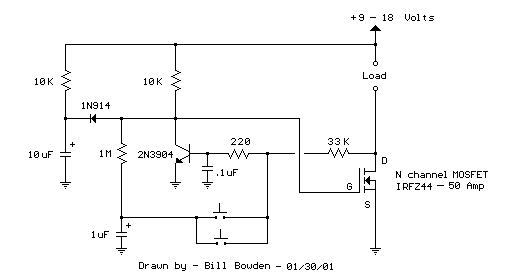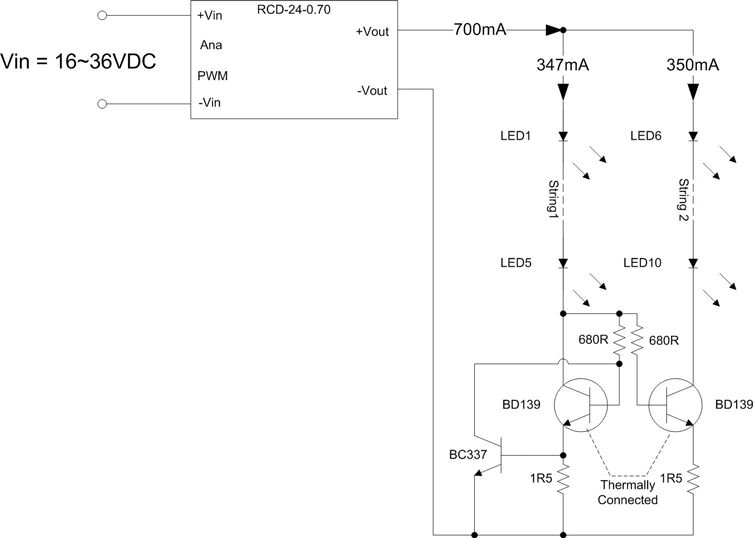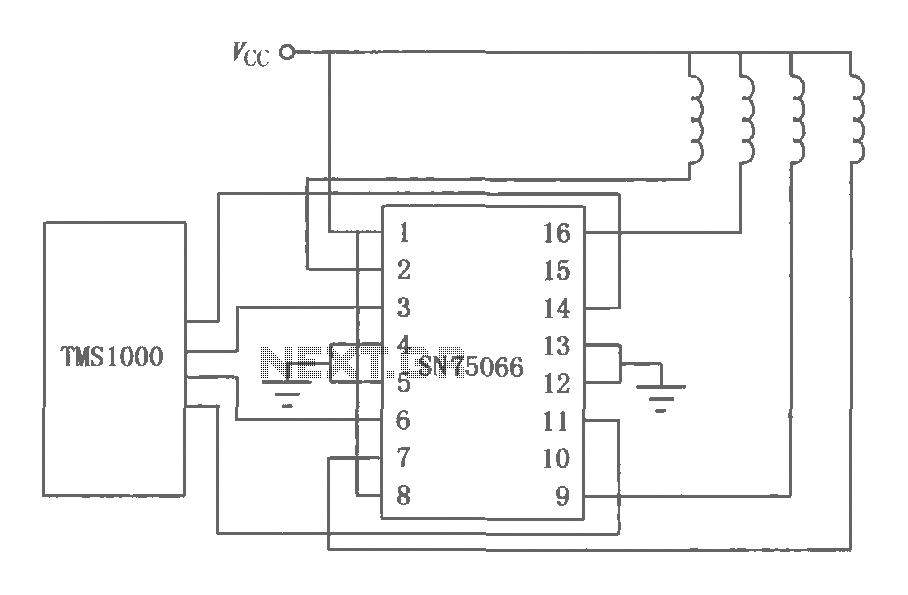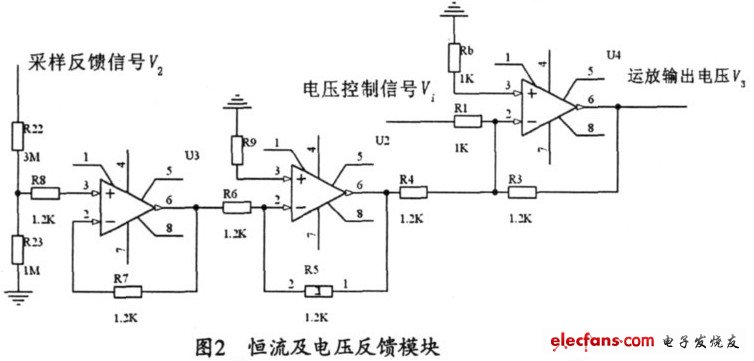
MOSFET current sensing
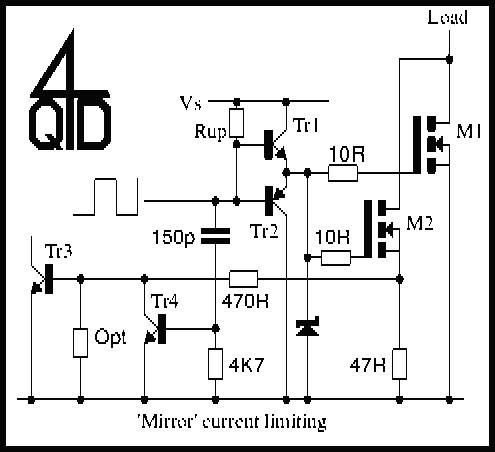
The circuit shows the method of mirror current sensing a MOSFET. A fully conducting MOSFET is resistive and behaves exactly as a resistor. It therefore you limit the voltage across the MOSFET when it is conducting you automatically limit the current flowing through it. In addition the MOSFET's on resistance has a positive temperature coefficient so as it warms up, keeping the voltage across it limited will automatically reduce the limited current flowing through it, keeping it within its safe region over a wide range of junction temperatures.
The described circuit utilizes a current sensing technique through a MOSFET, leveraging its resistive characteristics when fully turned on. In this configuration, the MOSFET operates in the saturation region, where it behaves similarly to a resistor. The method involves monitoring the voltage across the MOSFET to infer the current flowing through it. This is achieved by placing a sense resistor in series with the MOSFET, allowing the voltage drop across this resistor to be proportional to the current.
The primary advantage of using a MOSFET for current sensing is its positive temperature coefficient of on-resistance (R_on). As the temperature increases, R_on also increases, which in turn causes a reduction in current for a given voltage. This thermal feedback mechanism is beneficial in protecting the MOSFET from overheating, as it inherently limits the current when the device heats up.
To implement this circuit effectively, it is crucial to select a MOSFET with appropriate specifications, including maximum current rating, R_on, and thermal characteristics. Additionally, a suitable sense resistor must be chosen to ensure that the voltage drop is within measurable limits while maintaining minimal impact on the overall circuit performance.
For accurate current sensing, operational amplifiers can be utilized to amplify the voltage across the sense resistor, providing a more manageable signal for further processing or for use in feedback control loops. This configuration is particularly useful in applications such as power management systems, battery monitoring, and motor control, where precise current measurements are essential for system stability and efficiency.
Overall, this circuit design exemplifies the effective use of a MOSFET in current sensing applications, highlighting the importance of thermal characteristics and the relationship between voltage and current in maintaining device safety and performance.The circuit shows the method of `mirror` current sensing a MOSFET. A fully conducting MOSFET is resistive and behaves exactly as a resistor. It therefore you limit the voltage across the MOSFET when it is conducting you automatically limit the current flowing through it. In addition the MOSFET``s on resistance has a positive temperature coefficient so as it warms up, keeping the voltage across it limited will automatically reduce the limited current flowing through it, keeping it within its safe region over a wide range of junction temperatures.
🔗 External reference
The described circuit utilizes a current sensing technique through a MOSFET, leveraging its resistive characteristics when fully turned on. In this configuration, the MOSFET operates in the saturation region, where it behaves similarly to a resistor. The method involves monitoring the voltage across the MOSFET to infer the current flowing through it. This is achieved by placing a sense resistor in series with the MOSFET, allowing the voltage drop across this resistor to be proportional to the current.
The primary advantage of using a MOSFET for current sensing is its positive temperature coefficient of on-resistance (R_on). As the temperature increases, R_on also increases, which in turn causes a reduction in current for a given voltage. This thermal feedback mechanism is beneficial in protecting the MOSFET from overheating, as it inherently limits the current when the device heats up.
To implement this circuit effectively, it is crucial to select a MOSFET with appropriate specifications, including maximum current rating, R_on, and thermal characteristics. Additionally, a suitable sense resistor must be chosen to ensure that the voltage drop is within measurable limits while maintaining minimal impact on the overall circuit performance.
For accurate current sensing, operational amplifiers can be utilized to amplify the voltage across the sense resistor, providing a more manageable signal for further processing or for use in feedback control loops. This configuration is particularly useful in applications such as power management systems, battery monitoring, and motor control, where precise current measurements are essential for system stability and efficiency.
Overall, this circuit design exemplifies the effective use of a MOSFET in current sensing applications, highlighting the importance of thermal characteristics and the relationship between voltage and current in maintaining device safety and performance.The circuit shows the method of `mirror` current sensing a MOSFET. A fully conducting MOSFET is resistive and behaves exactly as a resistor. It therefore you limit the voltage across the MOSFET when it is conducting you automatically limit the current flowing through it. In addition the MOSFET``s on resistance has a positive temperature coefficient so as it warms up, keeping the voltage across it limited will automatically reduce the limited current flowing through it, keeping it within its safe region over a wide range of junction temperatures.
🔗 External reference
